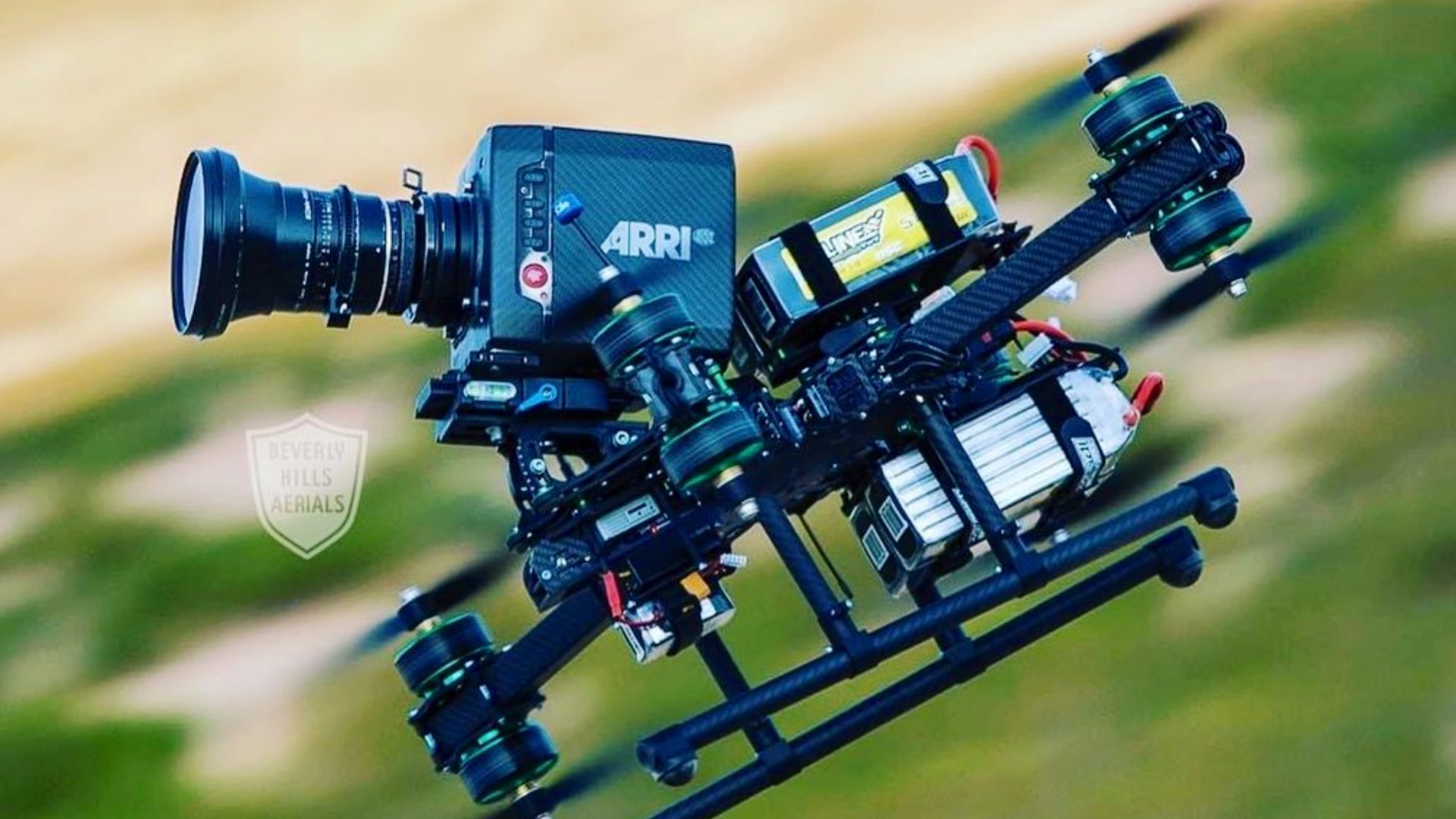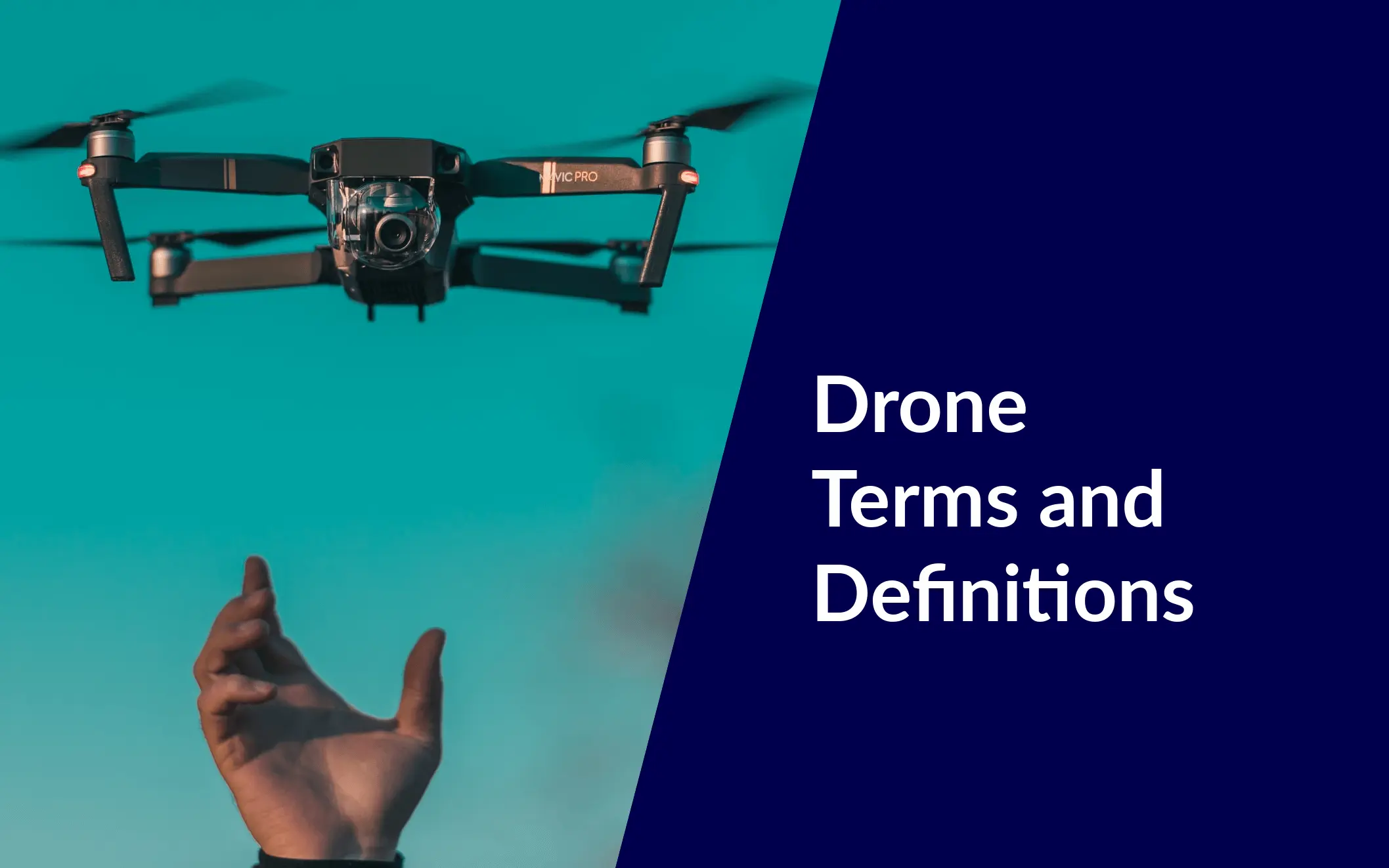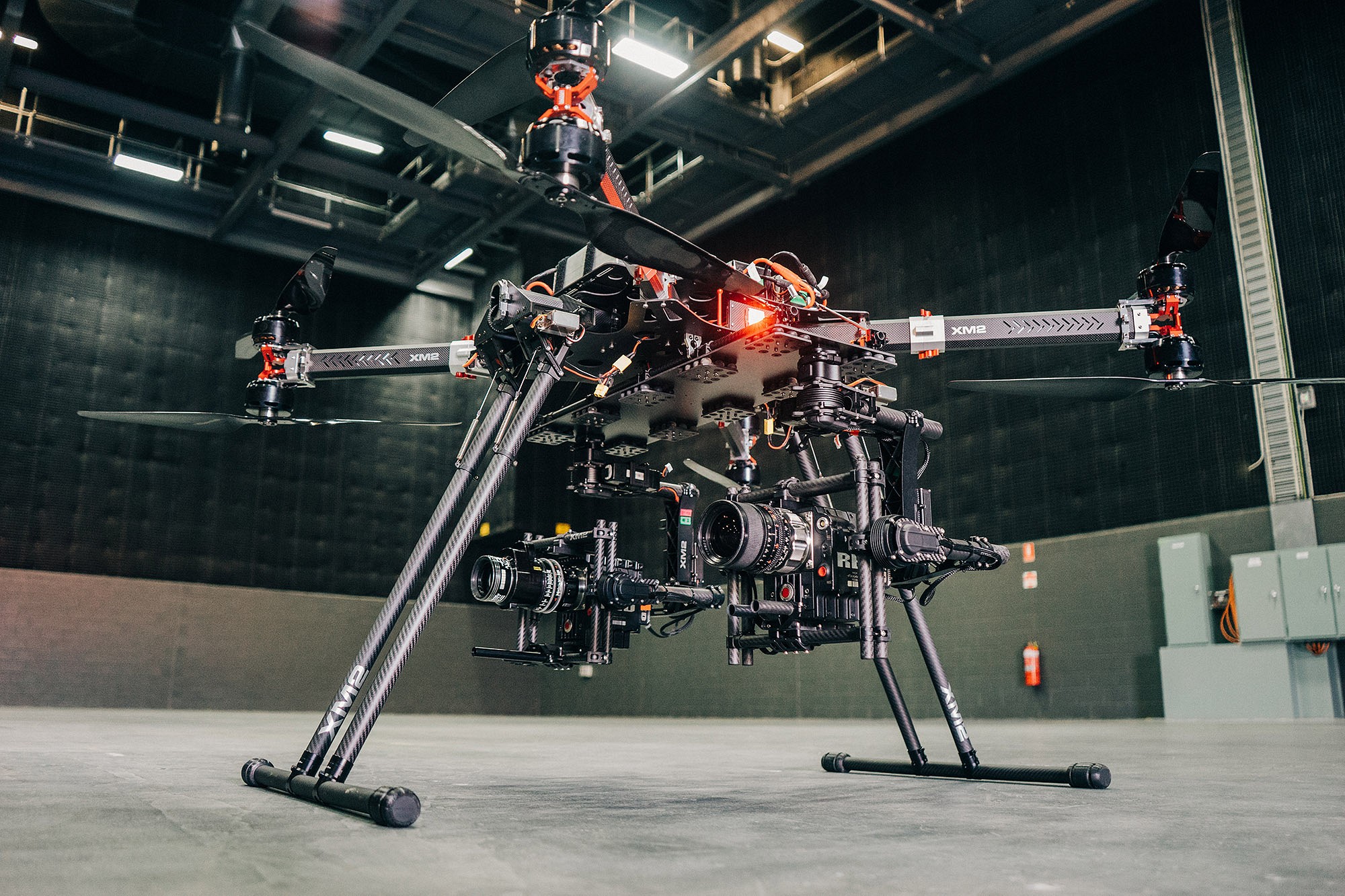Drone shooting has revolutionized filmmaking and photography, offering unprecedented perspectives and creative possibilities. This technology, however, presents a complex interplay of legal, ethical, technological, and safety considerations. Understanding these facets is crucial for responsible and effective drone operation, ensuring both creative success and adherence to established guidelines.
This guide explores the multifaceted world of drone shooting, encompassing legal and ethical implications, technological aspects, creative applications, post-production workflows, and essential safety protocols. We examine the diverse drone models available, techniques for capturing high-quality footage, and best practices for post-processing and delivery. The goal is to provide a comprehensive resource for both novice and experienced drone operators.
Legal and Ethical Implications of Drone Shooting

The increasing accessibility and capabilities of drones have significantly expanded their use in filming and photography, but this expansion necessitates a careful consideration of the legal and ethical implications. This includes navigating complex airspace regulations, respecting individual privacy, and ensuring public safety. Failure to do so can lead to legal repercussions and erode public trust in the responsible use of this technology.
Airspace Regulations and Legal Frameworks, Drone shooting
Drone operation is subject to a complex web of national and local regulations. These regulations often dictate permissible flight altitudes, operational distances from airports and other sensitive areas, and required pilot certifications. For instance, in the United States, the Federal Aviation Administration (FAA) mandates drone registration, pilot certification for commercial operations, and adherence to specific flight rules. Similarly, the European Union has implemented comprehensive regulations under the EASA (European Union Aviation Safety Agency) framework, which vary across member states but generally emphasize safety and security.
These regulations frequently evolve to address technological advancements and emerging safety concerns. Non-compliance can result in hefty fines and legal action.
Privacy Concerns and Ethical Considerations
The unobtrusive nature of drones raises significant privacy concerns. The ability to capture high-resolution images and videos from considerable distances presents a potential for surveillance and unauthorized recording of individuals in private spaces. Ethical considerations demand a careful balancing of the benefits of drone photography with the right to privacy. The use of drones to capture images or videos without informed consent, particularly in private areas, raises serious ethical questions.
The dissemination of such footage, especially if it is sensitive or compromising, can have severe consequences for individuals. Responsible drone operators must prioritize privacy and avoid intrusive surveillance.
Drone shooting offers unique perspectives for filming, particularly in challenging environments. The dynamic nature of aerial cinematography often necessitates specialized techniques, such as those highlighted in the fights camera action workshop. Understanding these techniques is crucial for achieving stable, high-quality footage, ultimately enhancing the overall effectiveness of drone-based filmmaking.
Comparative Analysis of Legal and Ethical Standards
Legal and ethical standards governing drone usage vary considerably across different countries. Some countries have relatively lax regulations, while others have implemented strict rules. For example, some jurisdictions may allow drone operation in certain public spaces without explicit permission, while others require permits for all flights. Similarly, the legal frameworks addressing privacy violations caused by drone footage differ significantly.
Some countries have robust privacy laws that offer strong protection to individuals, while others may have weaker protections. This variation highlights the need for careful research and compliance with local laws and ethical guidelines when operating drones in different regions.
Hypothetical Ethical Dilemma: Drone Footage and Dissemination
Imagine a scenario where a drone operator films a private gathering at a residential property without the consent of the individuals involved. The footage inadvertently captures a sensitive moment, which the operator then considers sharing on social media for its perceived entertainment value. This scenario presents a clear ethical dilemma. While the operator may argue that the event was partially visible from a public space, the act of recording and disseminating the footage without consent constitutes a serious breach of privacy.
The potential for emotional distress, reputational damage, and even legal repercussions for those involved is significant. The ethical considerations here far outweigh any perceived benefit from sharing the footage. This highlights the importance of responsible decision-making when dealing with drone footage and its dissemination.
Drone shooting offers unique perspectives for capturing dynamic action sequences, surpassing traditional filming methods. The ability to achieve stable, high-angle shots is significantly enhanced by employing advanced stabilization techniques, as demonstrated by the innovative camera work showcased in fights camera action. This access to previously unattainable viewpoints allows for the creation of more immersive and visually compelling drone footage, ultimately revolutionizing action cinematography.
Technological Aspects of Drone Shooting

Drone technology has revolutionized aerial cinematography, offering unprecedented access and perspectives for filmmakers. Understanding the various drone models, their capabilities, and the technical aspects of operation is crucial for achieving professional-quality video capture. This section details the technological considerations involved in utilizing drones for filming.
Types of Drones Used for Filming
The market offers a wide range of drones suitable for filming, each with specific capabilities and limitations. These range from compact, lightweight models ideal for quick shots and indoor use, to larger, more robust drones capable of carrying heavier payloads and operating in challenging conditions. Key differentiating factors include camera quality, flight time, payload capacity, and features such as obstacle avoidance and GPS accuracy.
Larger, professional-grade drones often boast features like interchangeable lenses and advanced stabilization systems. Smaller consumer-grade drones prioritize ease of use and portability, but may compromise on image quality and flight duration. The choice of drone depends heavily on the specific needs of the project and the budget available.
Setting Up a Drone for Professional-Quality Video Capture
A step-by-step guide for setting up a drone for professional video capture involves several crucial stages. First, thorough pre-flight checks are essential, including battery level verification, gimbal calibration, and confirming the proper functioning of all systems. Second, selecting appropriate camera settings is critical. This includes setting the resolution, frame rate, and bitrate according to the desired quality and file size.
Third, establishing a stable connection between the drone and the remote controller is vital to ensure reliable control and signal strength. Fourth, the drone’s flight settings should be configured for the specific conditions, such as adjusting the maximum flight speed and altitude. Finally, practicing controlled movements and camera maneuvers is crucial before attempting complex shots.
Achieving Stable and Smooth Drone Footage
Stable and smooth footage is paramount in professional drone cinematography. Several techniques contribute to achieving this. Firstly, utilizing the drone’s gimbal effectively is crucial; this stabilizes the camera, mitigating the effects of vibrations and wind. Secondly, choosing the right flight mode, such as cinematic mode or tripod mode, helps to ensure smoother movements. Thirdly, understanding and accounting for environmental factors such as wind speed and direction is critical; flying in calmer conditions or employing advanced stabilization techniques can help to minimize wind-induced shakiness.
Fourthly, post-production stabilization software can further enhance footage smoothness, compensating for minor residual vibrations. Finally, careful planning of flight paths and camera movements contributes significantly to the overall quality and stability of the final product.
Comparison of Drone Models for Aerial Photography
| Model | Camera Quality | Flight Time (approx.) | Price (USD approx.) |
|---|---|---|---|
| DJI Mavic 3 Pro | Hasselblad 4/3 CMOS sensor, 20MP, 5.1K video | 45 minutes | 2199 |
| DJI Mini 3 Pro | 1/1.3-inch CMOS sensor, 4K video | 34 minutes | 759 |
| Autel EVO II Pro | 1-inch CMOS sensor, 6K video | 40 minutes | 1599 |
| Parrot Anafi USA | 1/2.4-inch CMOS sensor, 4K HDR video | 25 minutes | 699 |
Creative Applications of Drone Shooting

Drone cinematography offers a unique and powerful tool for visual storytelling, transcending traditional filmmaking limitations. The ability to capture dynamic perspectives and movements previously inaccessible opens new avenues for creative expression across various media. This section explores the diverse applications of drone technology in enhancing the visual narrative and aesthetic appeal of film and photography.
The utilization of drones in filmmaking and photography has significantly expanded the creative possibilities available to filmmakers and photographers. The ability to capture sweeping aerial shots, dynamic camera movements, and unique perspectives has revolutionized visual storytelling, allowing for the creation of breathtaking and immersive cinematic experiences.
Dynamic Camera Movements and Unique Perspectives
Drone technology enables a wide range of camera movements previously difficult or impossible to achieve. These movements contribute significantly to the overall visual impact and narrative effectiveness of a shot. Smooth, sweeping pans across landscapes, dynamic tracking shots following subjects in motion, and dramatic, swooping ascents and descents all contribute to a more engaging and immersive viewing experience.
The unique perspectives offered, such as bird’s-eye views or shots from unexpected angles, can add depth and context to the narrative, enhancing the viewer’s understanding and emotional connection with the story. For example, a sweeping pan across a bustling city street, showcasing the flow of traffic and the movement of people, would be far more impactful and visually engaging when shot from a drone than from a static position on the ground.
Enhancing Storytelling in Various Media
Drone footage significantly enhances storytelling across different media formats. In documentaries, drones provide a unique perspective on landscapes, events, and human activity, offering a broader context and deeper understanding of the subject matter. For instance, a documentary about wildlife conservation could use drone footage to showcase the vastness of a natural habitat and the impact of human activity on it.
In commercials, drones are used to create visually stunning and memorable advertisements, often showcasing products in unique and dramatic ways. A commercial for a luxury car, for example, might use drone footage to show the car speeding along a scenic coastal highway. Music videos frequently leverage the dynamic movement and unique perspectives offered by drones to create visually captivating sequences that complement the music and lyrics.
A music video for an upbeat pop song might use quick cuts and dynamic camera movements to create a sense of energy and excitement.
Examples of Innovative Drone Use in Filmmaking and Photography
The following examples illustrate the innovative and diverse applications of drone technology:
Several notable films and commercials have effectively utilized drones to enhance their visual storytelling. For example, the use of drones in the filming of the documentary “Planet Earth II” provided breathtaking footage of wildlife in their natural habitats, offering viewers a unique perspective and intimacy with the animals. Similarly, commercials for brands like Apple and GoPro frequently employ drone footage to showcase their products in visually stunning and dynamic ways.
The use of drones in these contexts highlights the technology’s capacity to transform the way stories are told, creating visually rich and engaging experiences.
Planning a Drone Shot: Pre-Production Steps
Effective drone cinematography requires meticulous planning. Pre-production involves several crucial steps to ensure safety, legality, and the successful execution of the planned shots. This includes thorough location scouting to identify suitable areas, considering factors such as airspace restrictions, potential hazards, and the desired visual aesthetic. Obtaining necessary permissions from relevant authorities, including airspace permits and any required filming licenses, is crucial.
Detailed shot lists and storyboards should be created to visualize the desired shots and camera movements, ensuring a clear and efficient workflow on the day of the shoot. Finally, thorough risk assessment and safety protocols are essential to mitigate potential hazards associated with drone operation. This planning phase ensures a smooth and successful drone shoot, optimizing both safety and creative potential.
Array
Post-production is crucial for transforming raw drone footage into a polished, visually compelling final product. This stage involves a series of steps designed to enhance the quality, stability, and overall aesthetic appeal of the video. Effective post-production techniques can significantly elevate the impact and storytelling capabilities of drone cinematography.
The post-production workflow typically begins with importing the footage into editing software. This is followed by a series of processes, including color correction and grading to ensure consistent and visually pleasing color throughout the video. Stabilization techniques are applied to smooth out any camera shake or vibrations inherent in drone footage, enhancing the viewing experience. Visual effects (VFX) may be added to enhance the creative vision, adding elements like titles, transitions, and other graphical enhancements.
Finally, the video is exported in the desired format and resolution for distribution.
Software and Tools for Post-Processing Drone Videos
A variety of software and tools are available for post-processing drone videos, each offering unique functionalities and strengths. The choice of software often depends on the user’s experience level, budget, and specific project requirements.
- Adobe Premiere Pro: A professional-grade video editing software offering comprehensive tools for color correction, stabilization, VFX, and audio editing. Its extensive features and user-friendly interface make it a popular choice among professionals.
- DaVinci Resolve: A powerful and versatile video editing and color grading software known for its advanced color correction capabilities. It offers a free version with many professional features, making it accessible to a wider range of users.
- Final Cut Pro X: Apple’s professional video editing software, known for its intuitive interface and magnetic timeline. It offers robust tools for stabilization, color correction, and VFX, and integrates seamlessly with other Apple devices.
- After Effects: Adobe’s motion graphics and visual effects software, frequently used in conjunction with Premiere Pro to create sophisticated VFX and animated elements for drone footage.
Techniques for Creating Visually Appealing Drone Footage
Creating visually appealing drone footage goes beyond simply capturing high-resolution video. It involves careful consideration of composition, editing techniques, and storytelling elements to create a cohesive and engaging narrative.
- Composition: Utilizing the rule of thirds, leading lines, and other compositional techniques can create a more visually balanced and interesting frame. Careful consideration of the placement of the subject within the frame enhances the overall aesthetic appeal.
- Editing: Smooth transitions, well-paced cuts, and dynamic camera movements can significantly enhance the viewing experience. Avoiding jarring cuts and maintaining a consistent visual style are key to creating a professional-looking video.
- Storytelling: Drone footage should tell a story. Careful planning of shots and sequences, along with the incorporation of music and sound effects, can significantly enhance the emotional impact of the video. A clear narrative arc enhances viewer engagement.
Exporting and Delivering a Final Drone Video Project
The final step in the post-production workflow involves exporting the video in the appropriate format and resolution for its intended use. This ensures compatibility with various platforms and devices while maintaining high visual quality.
- Choose the appropriate export settings: Select the desired video codec (e.g., H.264, H.265), resolution (e.g., 1080p, 4K), and frame rate (e.g., 24fps, 30fps) based on the intended platform and audience.
- Render the video: Initiate the export process, which involves encoding the video file according to the selected settings. The rendering time will vary depending on the video length, resolution, and computer specifications.
- Review the exported video: Once the rendering is complete, review the exported video to ensure the quality meets expectations. Check for any artifacts or compression issues.
- Deliver the final video: Depending on the intended use, the final video can be uploaded to video-sharing platforms (e.g., YouTube, Vimeo), delivered via email, or burned onto a physical media (e.g., DVD, USB drive).
Mastering the art of drone shooting requires a nuanced understanding of its various components. From navigating complex legal frameworks and ethical considerations to mastering the technical aspects of flight and post-production, a holistic approach is essential. By integrating best practices in safety, creativity, and technical proficiency, drone operators can unlock the full potential of this technology, producing visually stunning and ethically responsible content.
Expert Answers
What type of license or permit is required to operate a drone?
Regulations vary by country and region. Many jurisdictions require registration of the drone and may necessitate a pilot’s license or permit, especially for commercial use. Check local aviation authorities for specific requirements.
How do I ensure my drone footage is legally compliant with privacy laws?
Avoid filming individuals without their consent. Be aware of airspace restrictions near private property and sensitive areas. Familiarize yourself with data protection laws concerning the collection and use of personal information captured in drone footage.
What is the best way to handle challenging weather conditions during drone flights?
Never fly in strong winds, rain, or fog. Always monitor weather forecasts before and during flights. Utilize features like wind resistance settings on the drone and consider postponing flights if conditions are unsafe.
What software is recommended for editing drone footage?
Popular choices include Adobe Premiere Pro, DaVinci Resolve, and Final Cut Pro. The best software depends on individual needs and experience level, with options ranging from user-friendly interfaces to professional-grade features.